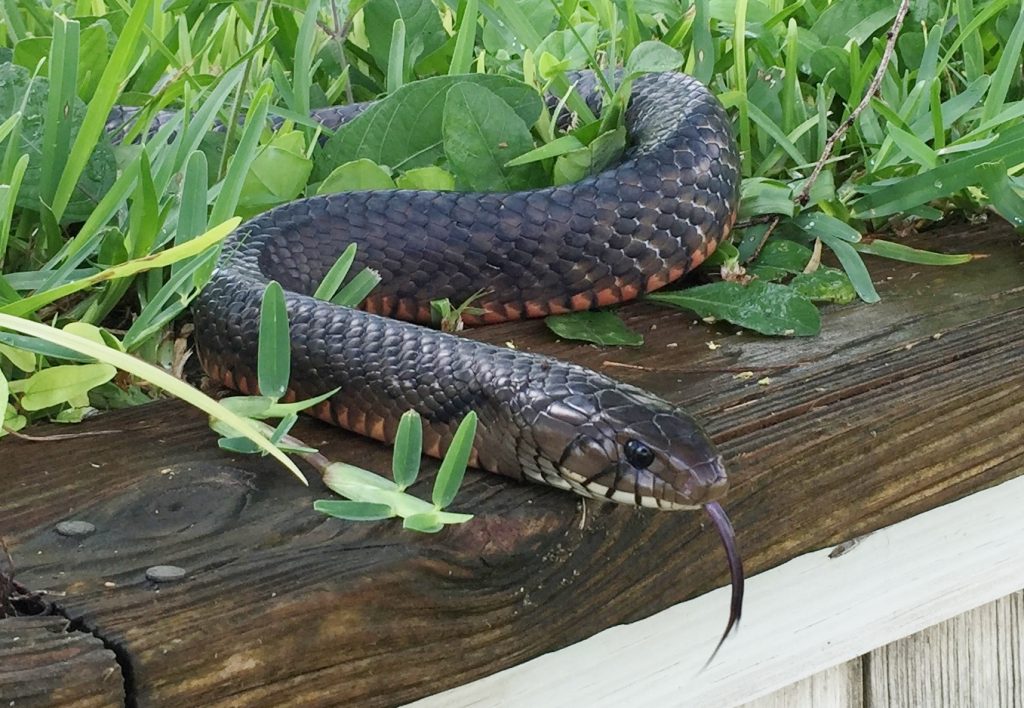
By Anita Westervelt, Texas Master Naturalist.
If you’ve never seen a big, beautiful Texas Indigo snake, it’s an amazing sight.
They are active in the day time, although much of their time is spent hiding. You are most likely to see one of these beauties in lightly vegetative areas near a permanent water source. They also can be found in mesquite savannahs, open grassland areas and coastal sand dunes.
Southern Texas is its northern range and they are found as far south as Veracruz, Mexico.
The Texas Indigo snake, Drymarchon melanurus erebennus, a subspecies of the Eastern Indigo snake, is predominantly black in color. Their smooth scales have a high sheen, giving them an iridescent hue in the sun. The underside is often a salmon color with a creamy white color under the lower jaw.
If you’re thinking one would make a spectacular pair of boots, think again. The Texas Indigo is listed as threatened in Texas and cannot be hunted or killed. Its biggest threats are road endangerment and habitat loss from community development.
Averaging six to eight feet long and weighing four to five pounds, they can live up to forty years. The Indigo is the largest species of harmless, non-aggressive snake in the state, but be respectful and leave it be. The state’s adage is, “If it’s an Indigo, let it go.”
At six feet, with body girth around four inches, a first glance might be startling especially if it lifts its head and gives a couple of tongue flicks. Don’t run. Stay still and behold this beneficial creature. A snake flicks its tongue to get a sense of its environment by collecting odors present in miniscule moisture particles floating through the air.
Indigo snakes require a large home range, often crossing roads as they forage for food. Diet consists of anything they can overpower and swallow including mammals, birds, lizards, frogs, turtles, as well as other snakes – including rattlesnakes. It relies on the sheer strength of its powerful jaws to subdue its prey.
Because of their ability to consume rattlesnakes, ranchers and even homeowners will make their land hospitable for Indigo snakes. They are attracted to large brush piles and hollow dead logs camouflaged by leaf litter.